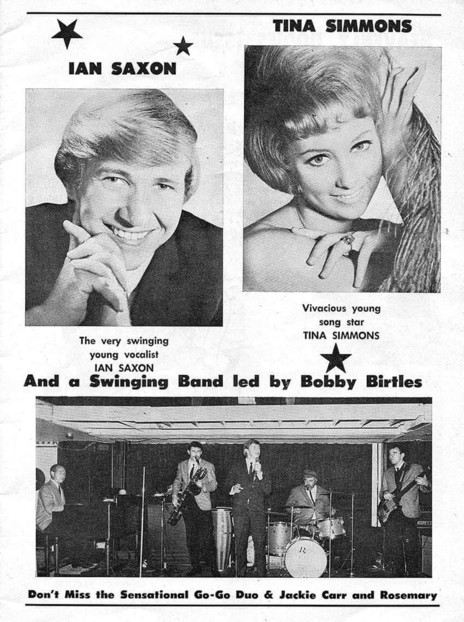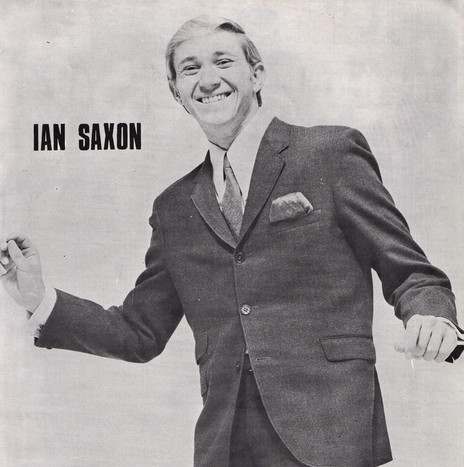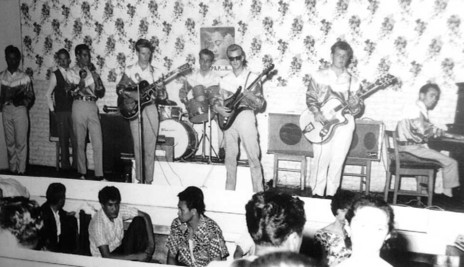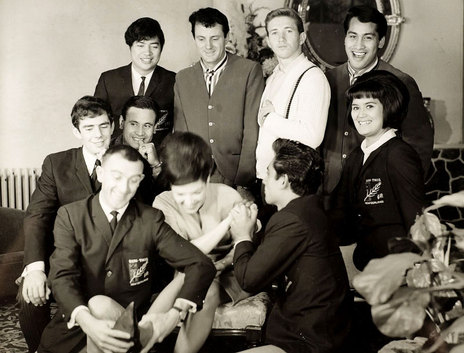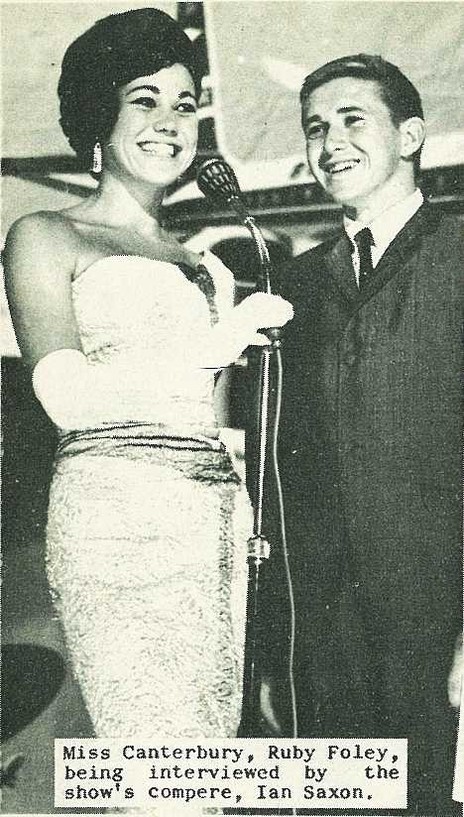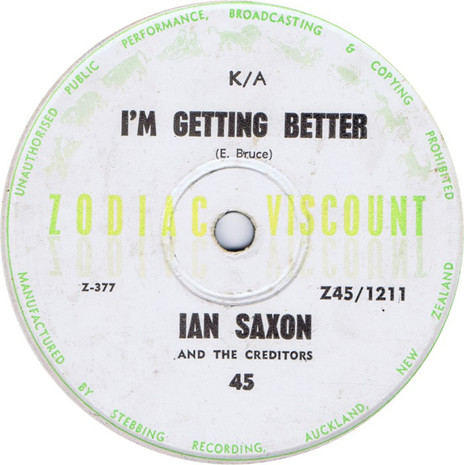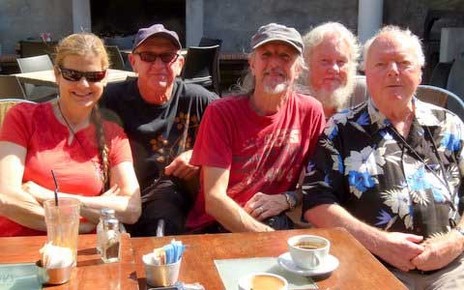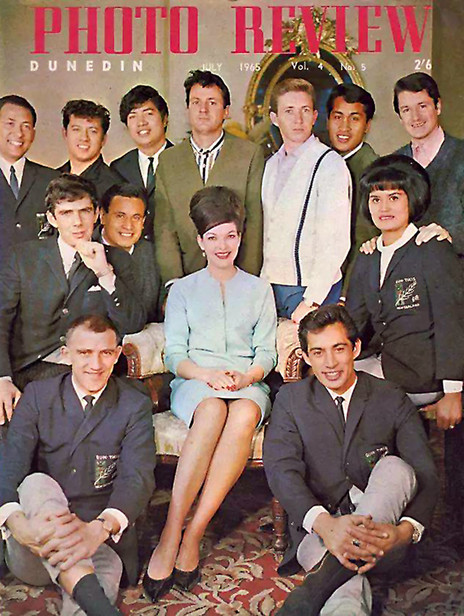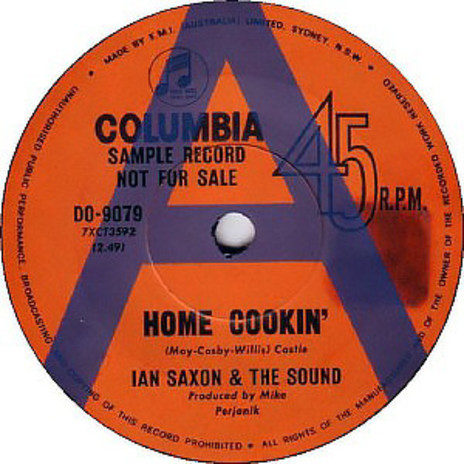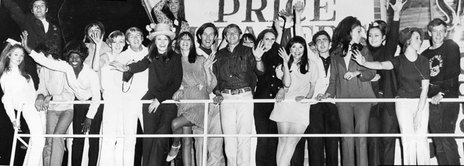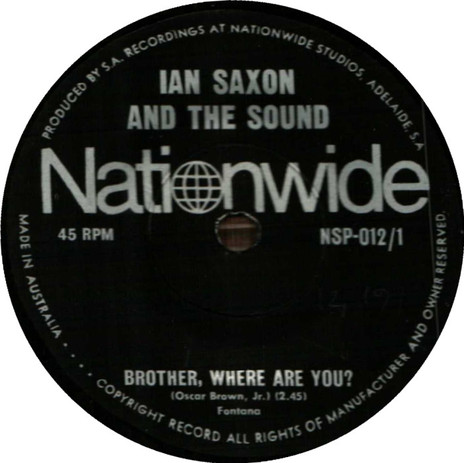“It was the most interesting week of my life, The Ultimate Event with Frank Sinatra, Liza Minnelli and Sammy Davis Jr, and the craziness started before they even arrived in the country. A few days before they arrived, I attended a meeting at Melbourne International Airport with me, (tour manager) Swampy Marsh, and (promoters) Michael Chugg and Tony Cochrane, plus the airport manager, the head of the Victorian police, someone from the Federal Police, and the heads of customs and immigration. I shouldn’t have been in the same room as these guys – I had just landed ten tonnes of hashish in Sydney, unloaded the stuff off the ship, put it to bed and down to Melbourne for the Sinatra tour.
“Chuggy told them that the Sinatra crew didn’t like to go through Customs but before they could respond, he said, ‘Oh I forgot to ask if any of you would like to attend the show as our guests.’ That did it. We even had a full rehearsal on the day before. There was 40 guys from Bob Jones Security, velvet ropes leading to the limos, one each for the stars, plus a fleet of other vehicles. It was party of 67 but maybe 10 of them, the stars and partners and managers, were hustled through to a private area and into the waiting limos. Customs and Immigration processed them in the hotel about two hours later. In Sydney the motorcade had four motorcycle cops leading the way and not a single red light. The power of Sinatra! We didn’t get that cooperation in rock’n’roll.”
Ten months later, in January 1990, Ian Saxon was arrested and charged with importing 30 tonnes of hashish into Australia.
Ten months later, in January 1990, Ian Saxon was arrested and charged with importing 30 tonnes of hashish into Australia. That might have been the end of it; not exactly the lower end of offending, just one more former pop star gone bad. But in March 1993 Saxon went from a little-known criminal and former minor pop star to household name.
Ian Hall Saxon was born in Auckland on 19 January 1943 and grew up around music, his father being an accomplished pianist; Ian toyed with the saxophone and played a little guitar but he saw himself as a singer. His first paid gigs were in 1961 at St Seps’ dance hall, Newton, in the resident big band led by Niel Randrup and featuring drummer Frank Gibson Sr. “That didn’t last long, it was the end of an era and the big bands were going out.”
Saxon was nothing if not ambitious and he created a career as the ‘Singing Compere’. “I stole that off Lou Clauson,” he says. “He didn’t need it anymore after he became one half of Lou & Simon.” His first gig as singing compere, in 1962, was at the newly-opened Shiralee nightspot, followed in 1963 by another new venue, The Top Twenty, and then down to Wellington, working for local promoter Ken Cooper, compering Teenarama events around the region.
These experiences led to compering national tours for promoters such as Jim Haddleton, Graham Dent and Joe Brown; artists included Tommy Adderley, Bill & Boyd, Dinah Lee, the Howard Morrison Quartet, Max Merritt & the Meteors, Peter Posa, the Quin Tikis and Toni Williams.
“Some of these tours went on for three or even four months, not always the same line-up, one act would peel off and another come in. Big towns and small towns, mostly theatres or town halls. Sometimes I might be the advance man putting up posters and alerting the press and radio but mostly I was the singing compere and often the side-stage guy doing the lights and curtains, old school, I did that shit too. I was usually lumbered with what we called the Ice Cream Slot, first up after the break when the audience was too busy finishing their ice creams to applaud.
“The format – and most promoters did this, Benny [Benny Levin], Haddleton, Dent – would feature a headline act like the Morrison Quartet or Peter Posa, and a couple of lesser lights like, say, Tommy Adderley, maybe a country and western act and a backing band like the Meteors, who’d also do their own set, and there’d be me, the singing compere, and a comedy act or [magician] Jon Zealando or a hypnotist, the old vaudeville format. I learned a lot from a guy named Stan Wineera, who had been a compere and comedian back in the vaudeville days.
“Graham Dent once used a guy called Prince Carlo Laska. I can remember in Levin or somewhere Graham had him laying on a bed of nails for two-three hours in a shop window to promote the show and he always made sure that one hotel room had a fully-made bed with Prince Carlo Laska’s bed of nails beside it, just in case a reporter or somebody asked the maid about him. He’d sleep in a different room. Dent was the original bullshit promoter. Prince Carlo Laska’s back was raw by the end of the tour and we all knew how to do his tricks, climb the ladder of machetes, it was fucking hilarious.
“We were all kids so the money wasn’t the object but I might get £20 a week, not bad money, plus £15 a week for accommodation, staying in old-style hotels, no toilet or shower in your room but including an evening meal. It was lots of fun.”
There were other activities when not on the road, briefly including a weekly radio spot in 1965 on the popular 1ZB breakfast announcer Phil Shone’s Saturday morning hour-long pop chart show, Priority Parade, sponsored by the Shiralee. Saxon’s five minutes was generally spent talking about that weekend’s entertainment at the Shiralee and other Auckland nightspots, but he got to interview the Rolling Stones.
“John Hawkins, the English guy at Stebbings, had worked in London just as the British bands were hitting their straps and he knew a lot of those guys, and he knew the Stones and he knew Loog Oldham so he arranged it and he sorted the recording equipment. I was dumber than dogshit, no background research. It was still Beatles and Stones and I was in the Beatles camp, didn’t really know all the Stones stuff. Harry Miller put them up at the Norfolk Lodge in Parnell, up near St Stephens Avenue, two to a room, Mick and Keith, Bill and Charlie … I cringe thinking back. After I asked some stupid fucking question, Charlie gave me a look like I’d crawled out from under a rock.”
“Eldred credited it to Ian Saxon and The Creditors because he didn’t expect the musicians to get paid.”
Dent shifted to Sydney in 1965, making plans for his stable of acts – Adderley, Saxon, and the Meteors: “Graham tried, half-pie managing us, but Tommy didn’t go, he still had immigration concerns, being a jumped seaman, but I followed Max and the boys over. Dent wanted me to have a record out to appear on Aussie television so he pressured Eldred [Stebbing] to record a single [‘I’m Getting Better’] and Eldred credited it to Ian Saxon and The Creditors because he didn’t expect the musicians to get paid.”
Dent secured a handful of RSA and dance hall gigs for Saxon but it was John Harrigan, well-established in the Australian music industry, who gave him a break, sending him on the road with two bands he managed, both top draw-cards, Ray Brown & the Whispers and Billy Thorpe & the Aztecs. A series of Tasmanian dances was organised by an ambitious 18-year-old named Michael Chugg.
Back in Sydney, Saxon’s luck changed. 1965 wasn’t a bad time to score a residency at the Latin Quarter, prestigious enough, with topline musicians, star guests, dancing girls, in the inner city: not Kings Cross, but colourful. Saxon had replaced Ricky May and the band included jazz great saxophonist Bob Bertles and drummer Stewie Speer, who later formed one half of what is considered the definitive Max Merritt & the Meteors line-up, at least in Australia. Over the next two years Saxon, the singing compere, shared the stage with Australia’s top acts and he mixed with some of Sydney’s most notorious characters. Later, in 1967, a gangland killing sent the venue’s party vibe plummeting, forcing its closure, or at the minimum a name change.
Saxon relocated to the Gold Coast in 1967 and the following summer he was lured back to New Zealand by promoter Doug Elliot to front a series of Radio Hauraki gigs with Larry’s Rebels, Allison Durbin and a new band, Sounds Unlimited (not the Wellington band of the same name). Returning to the Gold Coast he scored a residency without a backing band and, at his suggestion, Sounds Unlimited was flown over, changing their name to Ian Saxon & the Sound.
The band had an ever-changing line-up, including future star Colleen Hewett sharing lead vocals, and they toured with Australian rock and roll pioneer Johnny O’Keefe. However, despite regular work and a residency at Sydney’s Chevron Hotel, they were never major players. They released two singles in 1970, ‘Home Cooking’ and ‘Brother Where Are You?” but split later that year. Saxon became part of an 11-piece band called SCRA (Southern Contemporary Rock Assembly), which featured three vocalists, coincidentally all Kiwis: Saxon, Sheryl Black and Mike Leyton (an English immigrant to Auckland and a regular at The Top Twenty). SCRA released two albums, and the band’s final performance was at the 1972 Sunbury Festival. Minus the vocalists, the nucleus later regrouped as Crossfire, the seminal Australian jazz-fusion band.
Saxon spent the most of the 1970s in the USA. “In LA I became tight with Doug Weston, who owned the Troubadour, one of the top venues. By that time I’d become a bit of a bad boy. I hung out at the Troubadour: that was my cover in the States. Doug said, ‘Just tell them you work here’.” In 1979 he was arrested in a cocaine bust, spending six years in a Tahitian prison.
In 1985, back in Australia, Saxon’s rock and roll days should have been well behind him but the real adventures were about to begin. “The Frontier Touring Company had taken off. I knew Chuggy from Tasmania and I met Michael Gudinski during SCRA. They give me the smaller acts to tour manage, those foisted on Frontier by agents. I think Suzanne Vega was my first tour. Same thing with Jimmy Buffett, Gudinski didn’t want to know but Buffett had the same management as the Eagles and Fleetwood Mac. I also did Herbie Hancock, solo: just me, Herbie and his production manager. Herbie shared the same manager as Fine Young Cannibals, who Gudinski had his eyes on. He said to me, ‘I don’t wanna do these fucking jazz acts.’ Dizzy Gillespie was another. Man, I would have toured with Dizzy as a labour of love!”
John Mellencamp, Billy Joel, Bon Jovi and Poison were other acts Saxon toured with; Iggy Pop was a highlight. Before arriving in Australia, Iggy had played New Zealand as support act on Frontier’s Barnestorming package, sponsored by Pepsi Cola and headlined by Jimmy Barnes. Iggy was pissed off, having never heard of Jimmy Barnes and being no fan of Pepsi. “Fuck Pepsi Cola!” he screamed at the Athletic Park crowd.
“Gudinski didn’t want to know Iggy, he had him playing clubs and pubs. Iggy was in a slump, before he was reborn as a punk legend. At the end of the tour, the party was booked into the Greenmount Beach Resort in Coolangatta, which Iggy was really looking forward to, but it had no room service, no this and that, pretty low budget. Iggy was pissed off and on the way to the airport, he said to me, ‘Who is this fucking Michael Gudinski? First up he gets me to prop up his no-talent act in New Zealand and then he puts me up in this shitty accommodation.”
Things were pretty rosy for Saxon at the end of the 1980s: one tour after another, living comfortably with nice cars and a flash yacht, Rolling Thunder. It came crashing down on Australia Day, 26 January 1990. “The hounds were already baying at my heels,” he says, “and I should have been out of the country but Chuggy asked me to do one more tour, Tracy Chapman. She was due to fly in the next day; I had the tour itineraries in my possession, a stash of cash, the tour float, everything ready to go.”
Charged with the importation of hashish and denied bail, Saxon was incarcerated in the remand centre at Long Bay Prison. Things weren’t looking too good for the singing compere and they didn’t get any better. In a garage rented by an associate of Saxon’s, police discovered over $5m in $100 notes. Saxon then faced further charges of money-laundering. The legal process took forever and he was still on remand three years later when, in March 1995, he escaped from Long Bay Prison.
He was at large for two years, the subject of much speculation and many rumours, touted as Australia’s most wanted man with a $250,000 reward for his capture. In April 1995 he was apprehended in a luxury apartment in San Diego, California. Deported to Australia, later in the year he was given a 24-year prison sentence. “For importing hashish!” Saxon exclaims indignantly. He served 13 years, returning to New Zealand in 2008.
These days, retired, he lives a quiet rural life near Auckland, although he is occasionally hauled in by Frontier’s New Zealand agents, Brent and Helen Eccles, as a driver or to assist with tour logistics, just bits and pieces, mostly on the fringe. Regrets? “What’s the point? Nah, doesn’t make any sense to wallow in regret. I’ve spent over 20 years in prison and, sure, we’d all like to change some things but I chose my path. It’s been a hell of a ride.”
--
Ian Saxon passed away in Auckland on 17 September 2023.
